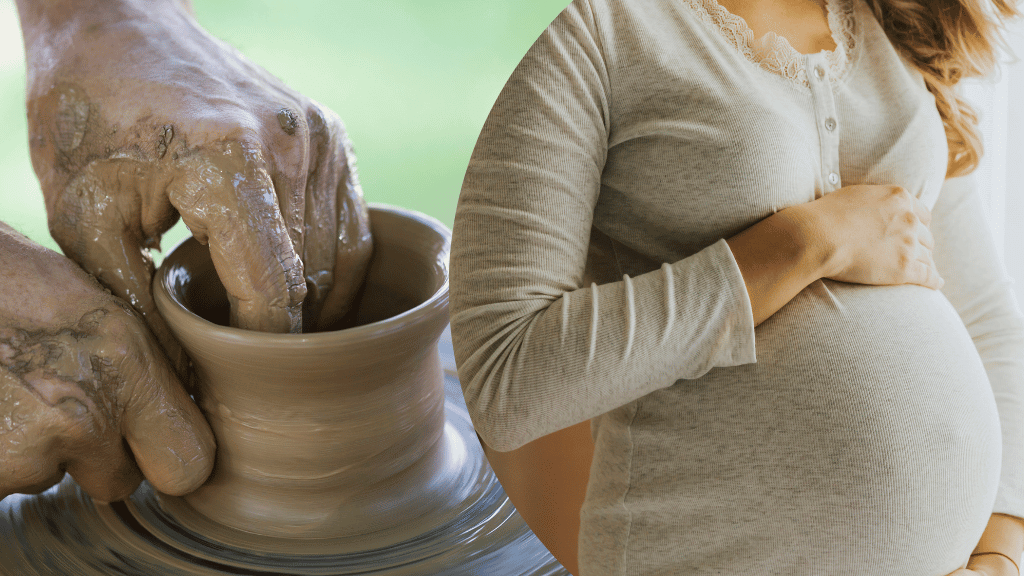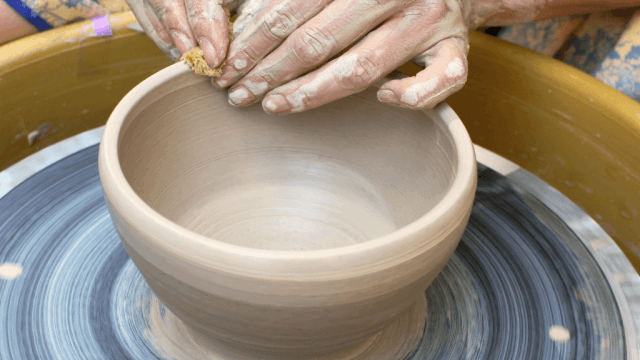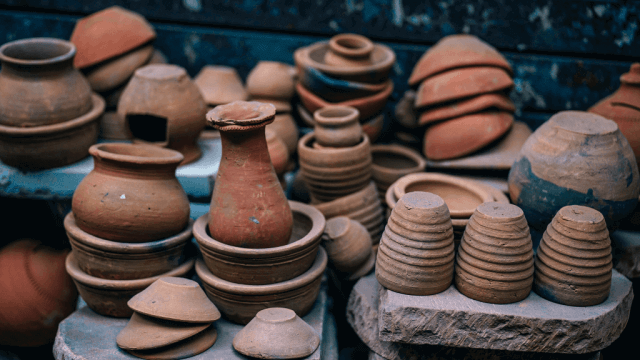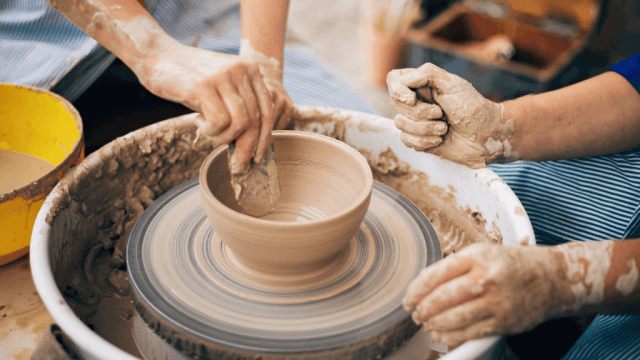Pottery glazes are generally safe during pregnancy, however, some glazes may contain toxic substances like lead and cadmium.
To ensure safety, use non-toxic, lead-free glazes and follow proper safety guidelines including wearing protective gear, ensuring good ventilation, and keeping food and drink away from workstations.
Pottery Glazes and Pregnancy Safety
Working with pottery while pregnant can be a fulfilling and creative pastime.
However, it is essential to consider the safety aspects of pottery glazes and their potential impact on your pregnancy.
Understanding Pottery Glazes
Pottery glazes are a mixture of various elements, which once heated, melt and create a glass-like surface on ceramics.
Glazes can contain materials like silica, alumina, colorants, and fluxes.
While most are non-toxic, some could contain harmful substances that may pose risks during pregnancy.
Identifying Unsafe Glazes
Some pottery glazes contain toxic substances like lead and cadmium that may be harmful during pregnancy.
Exposure to lead can result in developmental issues and low birth weight for your baby.
Cadmium exposure may lead to toxicity during pregnancy, impacting fetal development.
Choosing Safe Pottery Glazes
Opt for non-toxic and lead-free pottery glazes that are specifically labeled as safe during pregnancy.
Many manufacturers offer glazes that are free from harmful substances, ensuring the safety of both the mother and the developing baby.
Safety Guidelines for Pottery While Pregnant
To minimize risks associated with pottery glazes during pregnancy, follow these guidelines:
- Use non-toxic, lead-free glazes to avoid harmful exposure.
- Wear protective gear such as gloves and a face mask when working with glazes and other pottery materials.
- Ensure proper ventilation in your workspace to reduce inhalation of dust and fumes.
- Keep food, drinks, and personal belongings away from your work area to avoid contamination.
- Clean your hands, tools, and workspace thoroughly after each pottery session.
Considerations for Pregnant Potters
Aside from the concerns related to pottery glazes, there are some additional factors pregnant potters should be mindful of during their creative sessions:
Physical Strain
Working with pottery can be physically demanding.
Seated positions and repetitive motions can strain the body, especially during pregnancy.
Be aware of your body’s limitations and take breaks when necessary.
Using a Pottery Wheel
Using a pottery wheel may not be the most comfortable option during pregnancy, particularly in the later stages.
Alternative techniques, such as hand building and slab construction, can help alleviate discomfort while still allowing you to create beautiful pottery.
Clay Dust and Moisture
Clay dust can be harmful if inhaled for extended periods, especially for pregnant individuals.
Make sure to wet mop and wipe surfaces to keep dust to a minimum.
Additionally, maintaining a moisture balance in your clay is essential, as overly dry clay can lead to dust and overly wet clay can foster mold and bacteria.
Proper Kiln Use
Kilns can release toxic fumes, so proper ventilation is necessary to protect you and your developing baby.
Electric kilns generally produce fewer fumes than gas kilns, but regardless of the type, do not operate a kiln without proper ventilation and safety measures in place.
A Creative Outlet During Pregnancy
By following safety guidelines and choosing non-toxic pottery glazes and materials, you can continue to enjoy pottery during pregnancy.
Creating beautiful and functional pieces during this special time can be a rewarding and therapeutic experience.
Frequently Asked Questions
Here are some commonly asked questions related to pottery, glazes, and pregnancy safety.
This FAQ section is designed to help address additional concerns and provide practical guidance for pregnant potters.
Can I use underglaze and overglaze colors during pregnancy?
Yes, you can use underglaze and overglaze colors during pregnancy, provided they are non-toxic and lead-free.
Always check product labels for safety information and follow manufacturer’s guidelines for use.
Is it safe to fire a kiln while pregnant?
Yes, it is safe to fire a kiln while pregnant, as long as proper safety precautions are taken.
Ensure the area is well-ventilated, wear protective gear, and avoid directly inhaling any fumes released during the firing process.
How can I tell if a glaze is lead-free and safe for use?
To determine if a glaze is lead-free and safe for use during pregnancy, check the product label and safety data sheet (SDS) provided by the manufacturer.
Opt for glazes specifically labeled as non-toxic and lead-free.
Can I still handbuild my pottery while pregnant?
Yes, handbuilding is an excellent alternative to using a pottery wheel during pregnancy.
Techniques such as coil, slab, and pinch can be comfortably performed while pregnant and can even help alleviate physical strain associated with other pottery methods.
What can I do to minimize dust exposure in my pottery studio?
To minimize dust exposure, follow these tips: keep surfaces damp by regularly wet mopping and wiping, avoid using dry clay or over-dried materials, keep workspaces clean, and ensure proper ventilation to decrease inhalation of dust and fumes.











